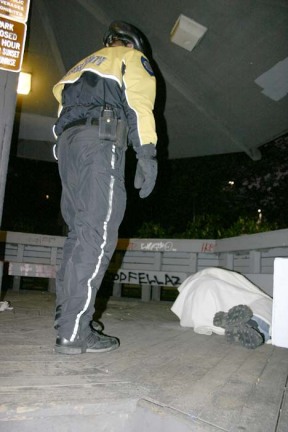For 42 people formerly living in encampments created in woody hillsides or beneath Interstate overpasses, the concept of home is a new one — at least within the last six months.
According to organizers of Housing First — an innovative program started last September and aimed to eliminate 13 well-known homeless encampments and relocate those displaced into long-term affordable housing — results of the program’s first six months show promise.
“This has been an extremely collaborative effort, and that is the reason it has been so successful to date,” said John Briehl, director of the city’s Human Rights and Human Services department, who provided an update on the program during the city council’s study session Tuesday.
The program was launched last fall with $1.1 million in funding from the City of Tacoma, Pierce County, Multicare and Franciscan hospitals, University of Puget Sound, and various housing providers. Tacoma police officers paired with social service case managers from Comprehensive Mental Health, Metropolitan Development Council, Tacoma Rescue Mission, and Greater Lakes Mental Healthcare moved through 13 homeless encampments near Wapato Hills, Interstate-5, and Interstate-705, and offered assistance transitioning homeless men and women out of the areas. Once initial contact was made, individuals were given 72 hours to either accept supportive housing with a case manager, move to a shelter, or simply just move on. Once the camp was vacated, Tacoma police officers worked to secure the area against further trespassing by installing fences and barriers.
On Tuesday, Briehl informed councilmembers that organizers moved through the last of the homeless encampments in February. They spent 1,722 hours and $76,110 cleaning up 175 individual camps. According to Briehl, 73 people were referred for housing. 17 individuals were denied housing as part of a rigorous screening process that checked for criminal records and any outstanding warrants. Seven people provided housing were later evicted due to alleged criminal and nuisance activities. Another seven people dropped out of the program and opted for the streets. To date, 42 people remain housed as part of the program, and organizers have spent $425,152.
Jason Kelly, a case manager with Metropolitan Development Council, provided insight into the challenge of transitioning individuals from the streets to stable housing. The biggest hurdle, he said, was introducing what is essentially a new concept for this population.
“A lot of this is relationship building,” he explained. “They don’t trust us, and they’re not used to being in a different social setting other than under bridges or out in the woods. Many people sleep on the floor when they first move in.”
Though organizers have housed more than half of its referrals, challenges still exist.
A slim inventory of available affordable housing is an ongoing issue, according to Briehl. Housing that originally rented for $500 per month when the program started has since climbed to $600 or more. Also, some landlords who gave the program a try are no longer interested in participating due to some of the problems encountered. “Client behavior is more of a challenge than we expected,” explained Briehl. “This is an entrenched population with behaviors that try any situation. It’s extremely demanding for case managers to be a cushion between tenants and landlords.”
Also, ensuring new homeless encampments aren’t created is also difficult. The program will turn a corner as it heads into summer months when the weather is less formidable and homeless men and women elect to sleep outdoors instead of inside shelters.
“The summer months will place an additional stress [on the program],” added Briehl.
City Manager Eric Anderson, who has worked closely with program organizers, echoed that concern.
“We need to work through the first 12 months before we know this is working,” he said. “This is really a status report, not a final report.”








